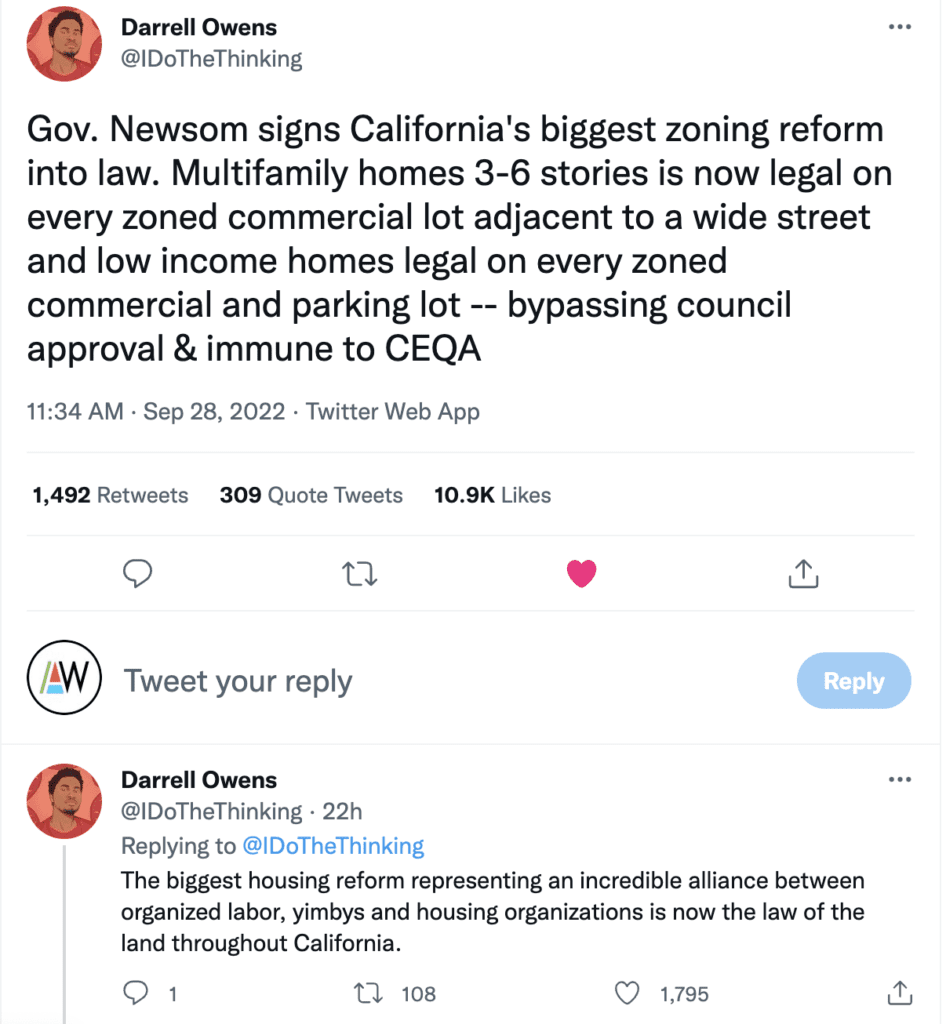A win for housing, climate, and yes, walkability

By Kait Spielmaker
California is known for setting bold legislative precedents that can ripple across the country – eventually being mimicked and enacted by other state legislatures. With high housing costs affecting communities across the nation, California’s recent housing legislation deserves a close look.
California Making Strides in a Slate of New Legislation
Over the summer, California – with the world’s fifth largest-ranking economy – appeared to be positioning itself as a global leader in climate action and mitigation. The state made headlines for approving climate legislation in the state legislature totaling approximately $54 million. Measures include aggressively cutting carbon emissions by banning the sale of all new gas cars by 2035 and limiting oil and gas drilling.
Now, they’re back again with more sweeping legislation just signed into law by Governor Newsom, this time, around another critical and pressing issue – addressing and supporting affordable housing. California is no stranger to this issue and residents have felt the increase in housing prices for decades.
The issue is being addressed in the form of three bills, AB 2011 and its companion bill SB 6, and AB 2097. AB 2011 upzones commercial corridors, while SB 6 ensures workers’ protections and livable wages through unions, and AB 2097 abolishes parking minimums near public transit.
This incredible slate of legislation comes nearly a year after the momentous bill eliminating single-family zoning. The bills garnered support through an unlikely coalition: pro-housing advocacy groups (i.e. YIMBY) and labor unions, specifically The Carpenters Union and the SEIC (the public works & school workers union). The combined forces of these seemingly opposing groups secured passage in the state legislature – through a nearly unanimous vote in August – and sent the bills to the governor’s desk.

How Does it Pertain to Walkability?
Housing and land use policy is walkability policy. While street infrastructure to support walking and rolling is critical, the proximity of housing to destinations is equally critical. Too much of US land use policy strictly separates different uses from each other – offices, housing, retail, and civic buildings in their own part of the map – instead of allowing uses to organically mix as they do in traditional town and city development. Parking minimums raise the cost of housing, but also lead to separating buildings with expansive parking lots. Separating uses and separating buildings from each other, then adding wide fast streets with few crosswalks or trees – well, that is the recipe for auto-dependent places that discourage walking or rolling.
Mixed-use neighborhoods with ample housing are also more easily served by transit than a suburban land use pattern. The equity implications of more housing near jobs, and better transit, are obvious.
With these bills, California is pointing the way to a more equitable and sustainable future. It doesn’t surprise us that walkability and accessibility are at the heart of that future.